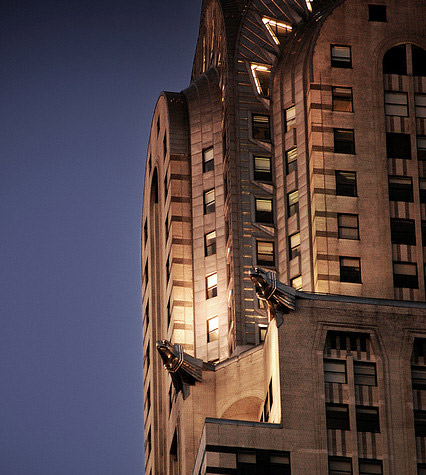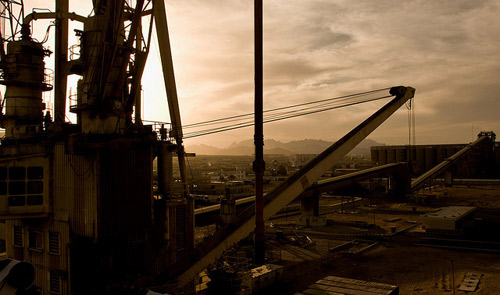There are few people who have never picked up a quick glance through a “home” or “decorator” magazine, and these are publications full of what many call architectural photography. This is a highly specialized field, but it also encompasses a few different variations.
For example, when a photographer tends to take only photographs of the exteriors of man-made structures they can also call themselves an architectural photographer as well. There are also those who head to different commercial production plants and facilities to make highly stylized images as well, and these people tend to refer to their work as “industrial”. All of these people can easily find steady streams of income through such a specialized approach to photography, but only if they create the strongest images possible.
For the purpose of this brief discussion we are going to consider how these photographers work, what sort of camera equipment they tend to rely upon and a few ways that someone might enter into this area of specialization.
The Essential Camera Equipment
Firstly, the equipment is going to always include a DSLR (digital single lens reflex) camera body, a variety of lenses (though wide angle is an absolute essential), and portable lighting rigs. There will also be the need for a tripod, and frequently for a cable release too.
Why so much gear to go about taking pictures of buildings, interiors, and industrial settings? These are all remarkably diverse areas and can demand almost any conceivable photographic technique to be done successfully.

Photo by laverrue
Fundamental Techniques
For example, let’s say that a photographer has been assigned a series of portraits of New York City’s most recognizable and iconic skyscrapers. The photographer immediately thinks of the gorgeous Art Deco Chrysler Building and begins to make some plans for capturing it with their camera. Now, this building alone could serve as the ideal subject for a complete photo spread because it has fine details, massive scale, and a highly decorative interior. This means that tripod, hand-held, illuminated, and slow shutter work is all possible, and that a photographer could easily bring all of their gear and put it to work during such an assignment.
There is, however, a need to limit the range of methods used and to really develop a personal style. Not all types of professional photography will allow someone to rely on a definitive “look”, but architectural and industrial photographers are actually wise to create a recognizable style. This might mean always shooting from a 45-degree angle, using reflections, or creating “expansive” spaces from even the smallest rooms or structures.
Consider that most architectural and industrial photographers will usually have to really take in a lot of area through the lens of their camera – regardless of their personal style. This is the reason that a wide angle lens work tends to be mandatory for this area of specialization. For instance, the Twin Towers in the heart of Kuala Lumpur would need a wide angle if recorded from their two massive bases, but so too would an average living room if the entire space was to be documented in the single shot!

Photo by IDS Photos
Looking for Inspiration
This means that equipment and techniques are essential to the work, but many photographers specializing in this particular area tend to also take inspiration from others who work regularly on a commercial basis. They will scour magazines, books, and websites to see how people are recording buildings and spaces with their cameras, and they will then (if they are particularly savvy) emulate some of the stylistic touches that give the images “something special”.
What does that mean? Well, any building or industrial site might photograph nicely during the middle of a brilliant summer day, but a clever photographer will make a point of heading to their various subjects at all hours of the day or night if that will let them get a very marketable shot. Consider that there is little to compare with the way city lights can make even a dull photograph extremely lively and interesting. Additionally, the harsh lines of any factory or production plant can be softened when they are shot against the glowing backdrop of the setting or rising sun.
This tells us that a clever photographer will be continually exploring how to make these somewhat mundane settings more lively and interesting, and this leads us to a major issue connected to any type of photographic specialization – and that is passion. If you are passionate about the type of photography you want to do then you will be easily able to earn a living doing it.
Getting the Work
So, where exactly do architectural and industrial photographers go to get work? They can:
– Approach magazine publishers with pre-existing work to show their skill;
– Present their work to major corporations who might use the shots in annual reports, special documents, websites and more;
– Create accounts at stock and travel photo sites and sell images on an individual basis; and
– Develop a website specializing in the work and offering electronic galleries that provide good examples.
With the right equipment and effort, a photographer can easily find themselves regularly working for businesses and individuals of all kinds taking architectural and industrial shots.
Share your Work
For those who would like to share their architectural and industrial photography please feel free to join our flickr group and add your images to the pool. Make sure and tag your architectural and industrial images with “TPA_Architectural”. From the pool of images we will be selecting the best examples of architectural and industrial photography and showcasing them in a future article. This can mean some great exposure and your images will be inspiring photographers from around the world.
